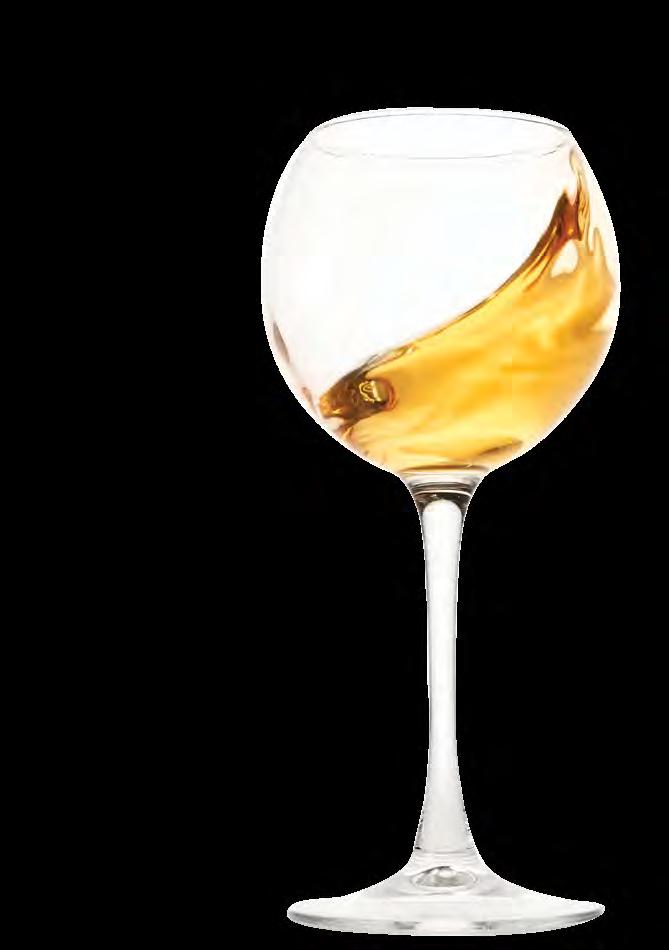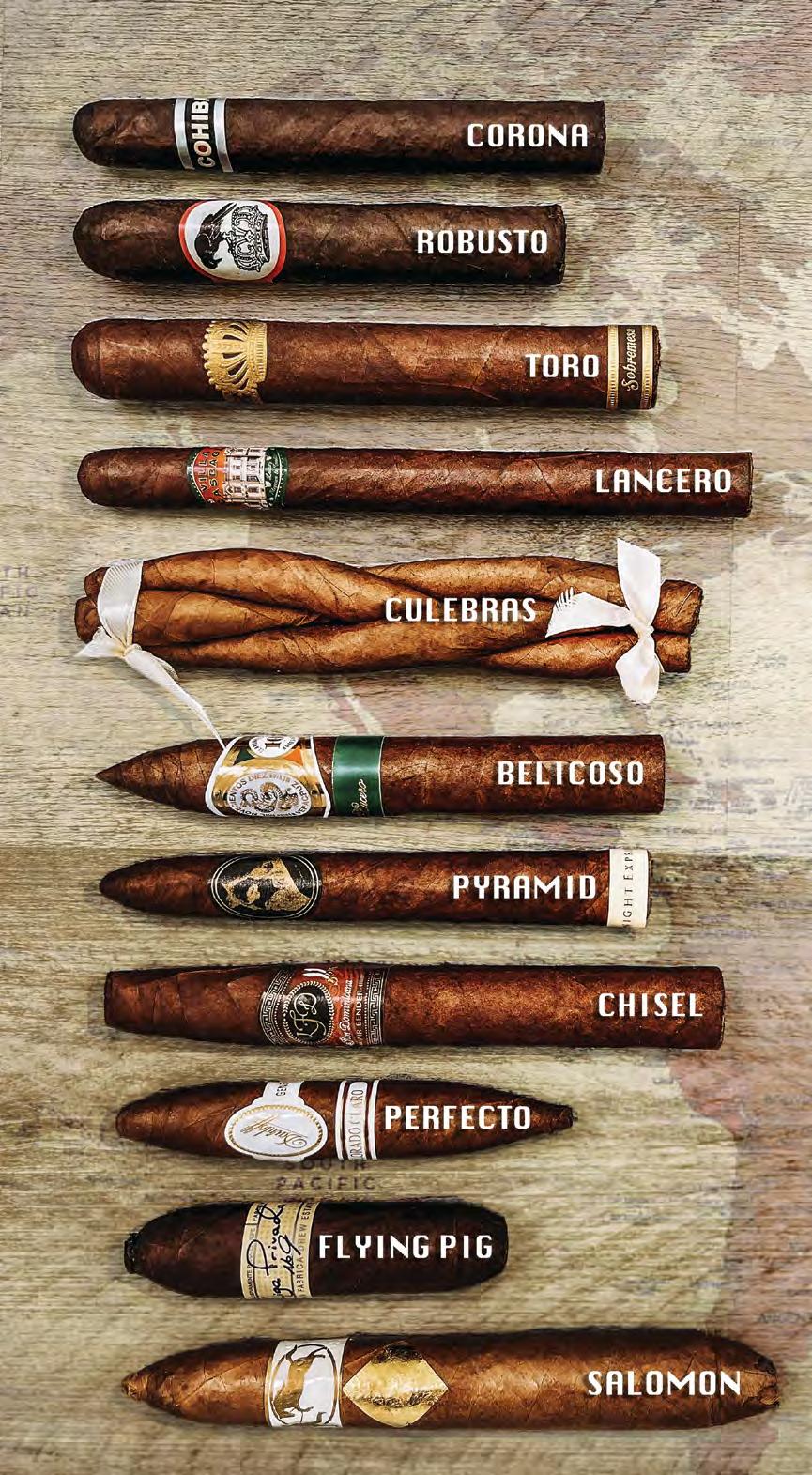
5 minute read
A Toast to Spanish Wine History
Spanish winemaking boasts a captivating heritage that dates back more than 3,000 years. The Phoenicians, Romans, and Moors each left their mark on the land and its viticultural practices, ultimately shaping the Spanish wine industry into the powerhouse it is today. Their legacy lives on through the innovative techniques and traditional customs that Spanish winemakers continue to cherish and uphold.
A Kaleidoscope of Wine
Advertisement
Regions Spain’s diverse wine regions each impart their unique touch to the nation’s vinous offerings. From the lush, rolling hills of Rioja to the arid, rugged terrain of Priorat, these distinct areas showcase the remarkable versatility of Spanish terroir. Other notable regions include the sun-drenched Ribera del Duero, the coastal paradise of Rías Baixas, and the enigmatic Sherry Triangle, each contributing their own flair to the Spanish wine scene.
A Symphony of Grape Varieties and Styles
Spain’s fascinating range of indigenous grape varieties offers a veritable playground for oenophiles. Tempranillo, the country’s flagship grape, seduces with its opulent red fruit and velvety tannins, while Garnacha enchants with its spicy, berry-driven profile. For white wine aficionados, Albariño and Verdejo present a refreshing medley of citrus, stone fruit, and floral notes. And let’s not forget the versatile Palomino, the backbone of Spain’s beloved fortified wines—Sherry!
Spanish wines span an incredible array of styles, including bold reds, crisp whites, delicate rosés, and effervescent Cavas. Even fortified wines like Sherry and Montilla-Moriles dazzle with their diverse expressions, from the bone-dry Fino to the lusciously sweet Pedro Ximénez.
A Tribute to Iconic Wineries
Spain’s illustrious wineries have been instrumental in shaping the nation’s vinous identity. Marqués de Riscal, a trailblazer in Rioja, helped to revolutionize the region’s winemaking, while Vega Sicilia’s legendary Unico has set the benchmark for Ribera del Duero’s finest. Torres, López de Heredia, and Alvaro Palacios are just a few of the visionary producers who have further elevated Spanish wine to new heights.
A Culinary Celebration
One cannot truly appreciate the allure of Spanish wines without indulging in the country’s delectable cuisine. Classic pairings, such as Rioja with succulent lamb or Albariño with fresh seafood, showcase the harmony of regional flavors. A common trend in wine regions is the fact that the wine develops around what the people who colutivated it had available to eat, such as the area where Albariño originates being in close proximity to the ocean. But don’t be afraid to get creative—Garnacha’s juicy fruitiness makes it a delightful companion for spicy dishes, while the zesty acidity of Cava brings a welcome lift to rich, savory tapas.
Deciphering Spanish Wine Labels
Navigating Spanish wine labels can be a breeze with a few helpful tips. Key terms like “Denominación de Origen” (DO) or “Denominación de Origen Calificada” (DOCa) indicate the wine’s regional origin and quality level, while terms like “Crianza,” “Reserva,” and “Gran Reserva” signify the wine’s aging period. By understanding these essential classifications, you can confidently select high-quality Spanish wines to suit your preferences and elevate your wine experience.
Conclusion
The vibrant and alluring world of Spanish wines is truly a sensory adventure worth embarking on. With its diverse regions, captivating grape varieties, and wide-ranging styles, Spain offers something for every wine lover to enjoy. As you continue to explore the enchanting universe of Spanish wines, you’ll uncover a cornucopia of stories, traditions, and flavors that are sure to leave a lasting impression. So, uncork a bottle, raise your glass, and toast to the unforgettable journey that is Spanish wine!
Recapping on cigar sizes and shapes
STORY BY TOMAS ZILINSKIS
Cigar shapes, also known as vitolas, play an important role in the smoking experience. From tiny cigarillos to massive double coronas, there is a vitola to suit every smoker’s preference. In this article, we will discuss the history, construction, and impact of different cigar sizes and vitolas. So sit back, light up your favorite cigar, and let’s dive into the world of cigar sizes.

Corona: It’s a great choice for beginners as it has a balanced flavor and moderate strength. The history of the corona cigar size dates back to the 19th century, when cigars first became popular in Europe and North America. The corona size is believed to have originated in Cuba, where it quickly became a popular choice among cigar smokers. Cohiba Black Corona is a premium cigar out of Dominican Republic with rich and spicy medium-to-full bodied blend.
Robusto: The robusto is a favorite among many cigar enthusiasts due to its compact size and full flavor. This size was creation that dates back to Cuba’s 40s where it was initially developed as a shorter yet thicker version of Corona size and until this day remains most popular choice for any cigar smoker. Stolen Throne Crook of the Crown Robusto is an exquisite blend with big notes of espresso, caramel, leather and cocoa.
Lancero: These slim cigars are known for their complex and concentrated flavor profiles, often featuring notes of wood, coffee, leather, and spice. Due to the small ring gauge, the flavor of the tobacco is amplified, providing a unique smoking experience that is favored by many connoisseurs.The lancero vitola can be challenging to roll, which is why it is typically only made by experienced cigar rollers and requires a high level of skill. Villa Casdagli Lancero is sitting at a top of my list with very complex notes of coffee, caramel, spice and vanilla.
Culebras: This unique vitola consists of three thin cigars twisted together to form a braided look. Smoking a culebra provides a complex flavor experience, as the three cigars each have their own distinct taste. Caldwell Antionette Culebra is a definite conversation starter.
Pyramid (Bellicoso): Also known as a torpedo, this vitola has a pointed head and a wider foot. Pyramid provides an unique smoking experience as the flavors change as you smoke from the pointed head to the wider foot. Caldwell
Midnight Express Pyramide that uses Arapiraca Maduro wrapper, giving it that distinctive creamy flavor.
Chisel: The chisel vitola has a flat head that tapers to a point, making it easier to cut and light. The chisel cigar was originally created by pressing a traditional round cigar into a chisel shape, using a special tool designed by Litto Gomez (La Flor Do- minicana) himself. Thus resulting in a cigar that had a unique shape allowing smoker to vary the draw and flavor of the smoke by changing the angle of the cut. La Flor Dominicana Air Bender Chisel with bold and meaty flavors is not to be missed.
Perfecto: This vitola has a tapered head and foot, with a bulge in the middle.Perfecto provides a unique flavor experience as the flavors change as you smoke from the tapered head to the wider middle and then back to the tapered foot. Davidoff Colorado Claro Short Perfecto is a masterpiece blend designed to be perfect at every draw.
Flying Pig: This whimsical vitola has a pigtail cap and a short, fat body with a curly tail. The flying pig provides a fun and flavorful smoking experience. Drew Estate Liga
Privada No. 9 Flying Pig is a unique smoking experience with rare tobaccos and wrapper fermented for over 18 months.
Salomon: This impressive vitola has a tapered head and foot, with a wide bulge in the middle first introduced by Davidoff as its limited edition cigar line. Its’ shape allows for a slow burn and rich and complex flavors. Cavalier Genève White Series Salomon has a mild yet complex profile with cream, stone fruit and flawless construction.
The history of cigar sizes is a testament to the artistry and skill of cigar makers, who have perfected their craft over centuries. Each vitola provides a unique smoking experience, so be sure to experiment with different sizes and shapes to find your perfect cigar.










